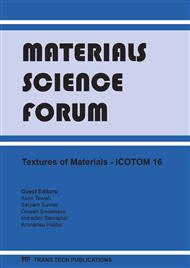p.975
p.979
p.983
p.987
p.991
p.995
p.999
p.1003
p.1007
A Cross-Sectional TEM Study of Abrasive Water Jet Cut Surface
Abstract:
Abrasive Water jet cutting (AWJ) is a process used to cut materials using a jet of pressurized water. These water jets are capable of cutting a variety of materials like superalloys, titanium alloys, stainless steel, tool steels, ceramics, armor tool and granite. In the present study an attempt has been made to investigate microstructural changes taking place in the sub-surface as a result of AWJ cutting using cross-sectional Transmission Electron Microscopy (TEM). TEM analysis shows that the sub-surface of the AWJ machined sample surface experienced severe deformations. The surface microstructure is observed to contain extremely fine sized grains, going down from sub-micrometer to nanometer range. The selected area diffraction pattern analysis also confirms the presence of extremely fine grained microstructure.
Info:
Periodical:
Pages:
991-994
Citation:
Online since:
December 2011
Authors:
Keywords:
Price:
Сopyright:
© 2012 Trans Tech Publications Ltd. All Rights Reserved
Share:
Citation:


